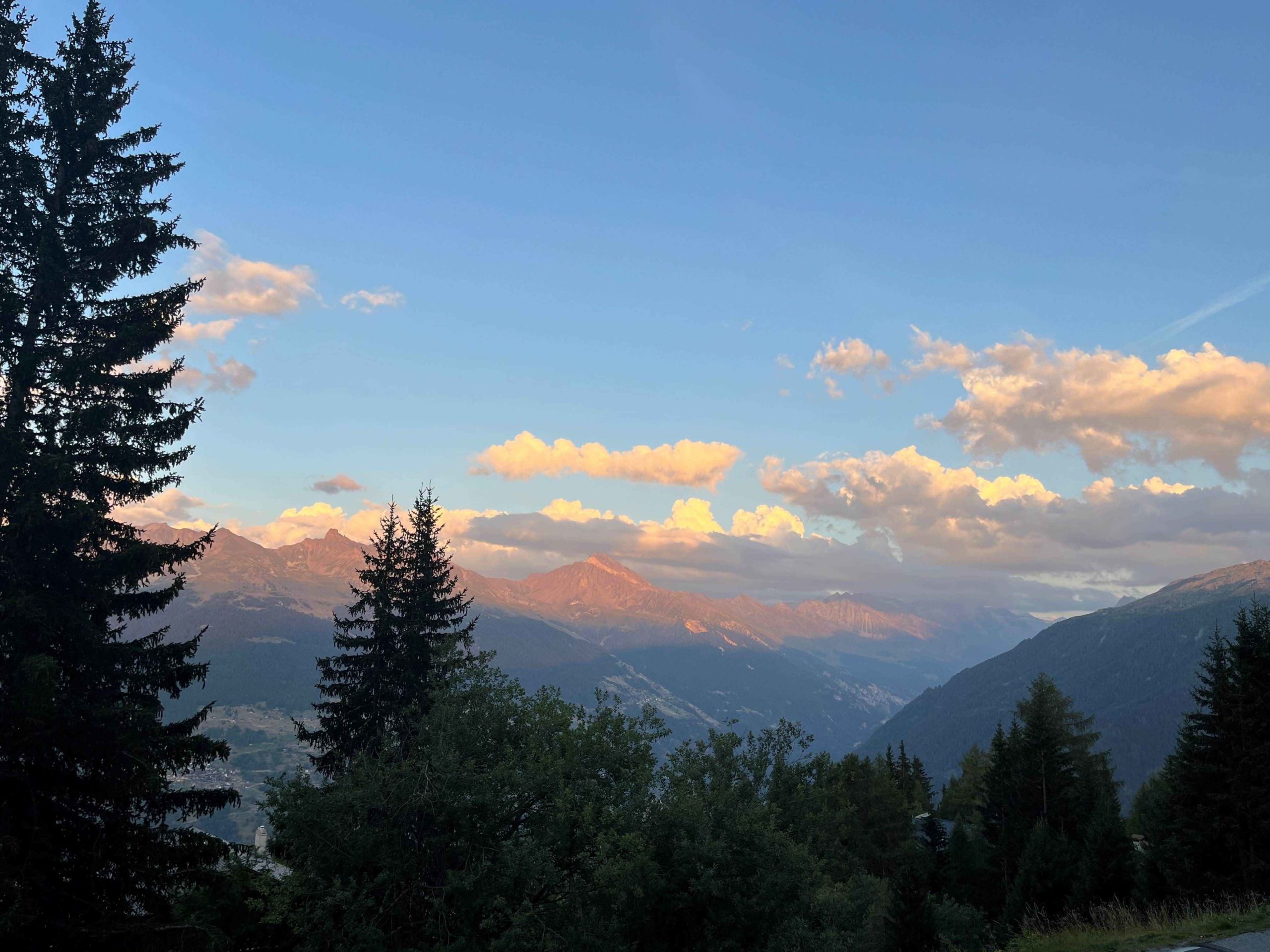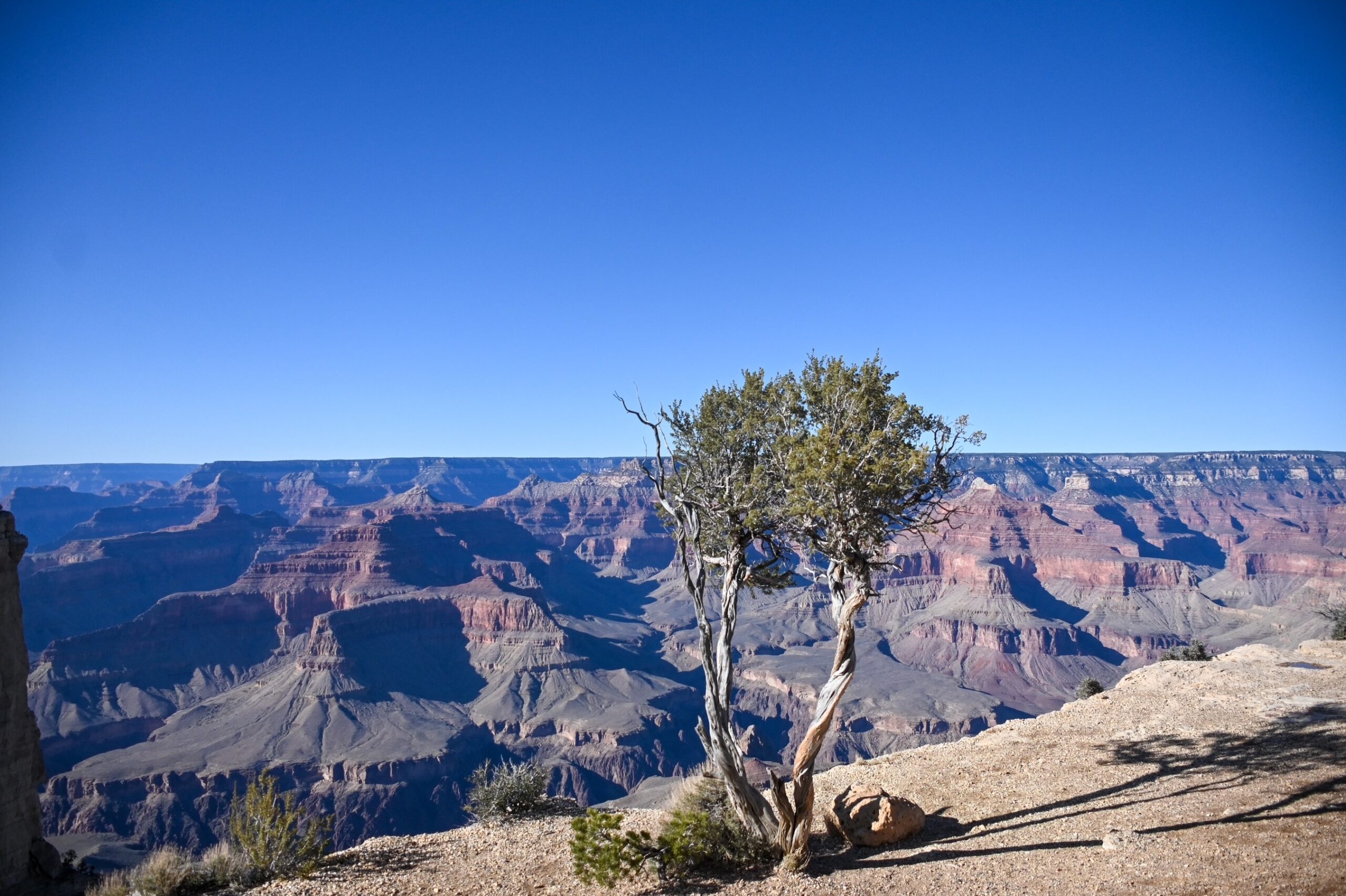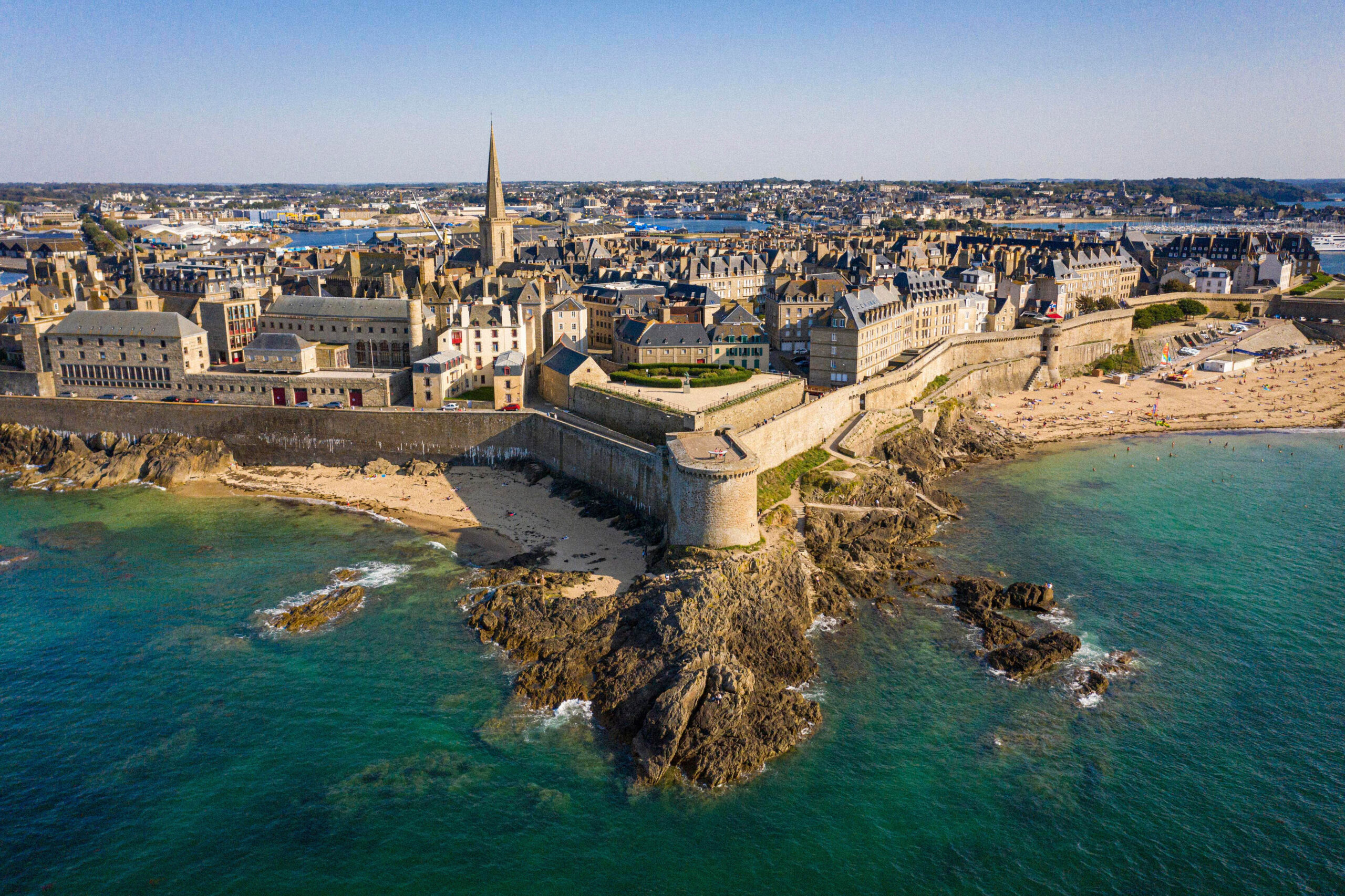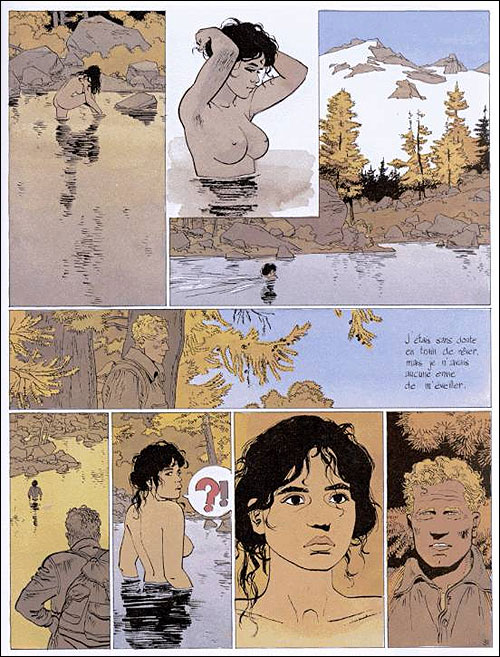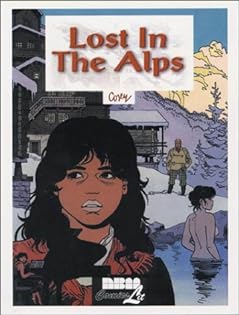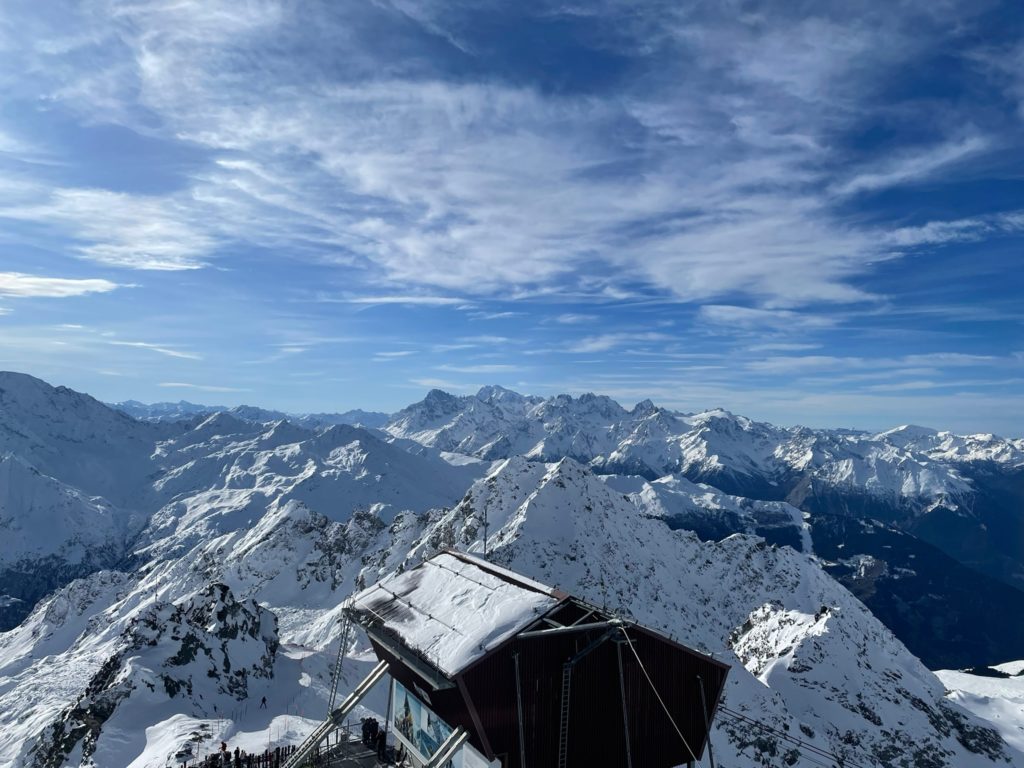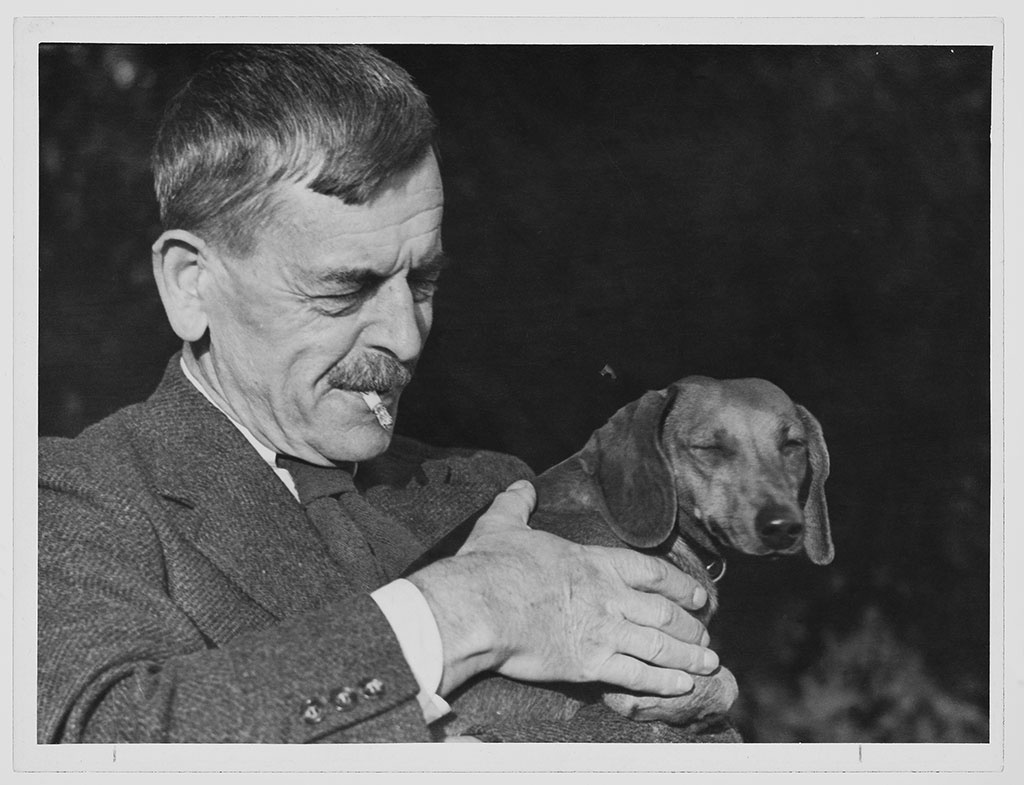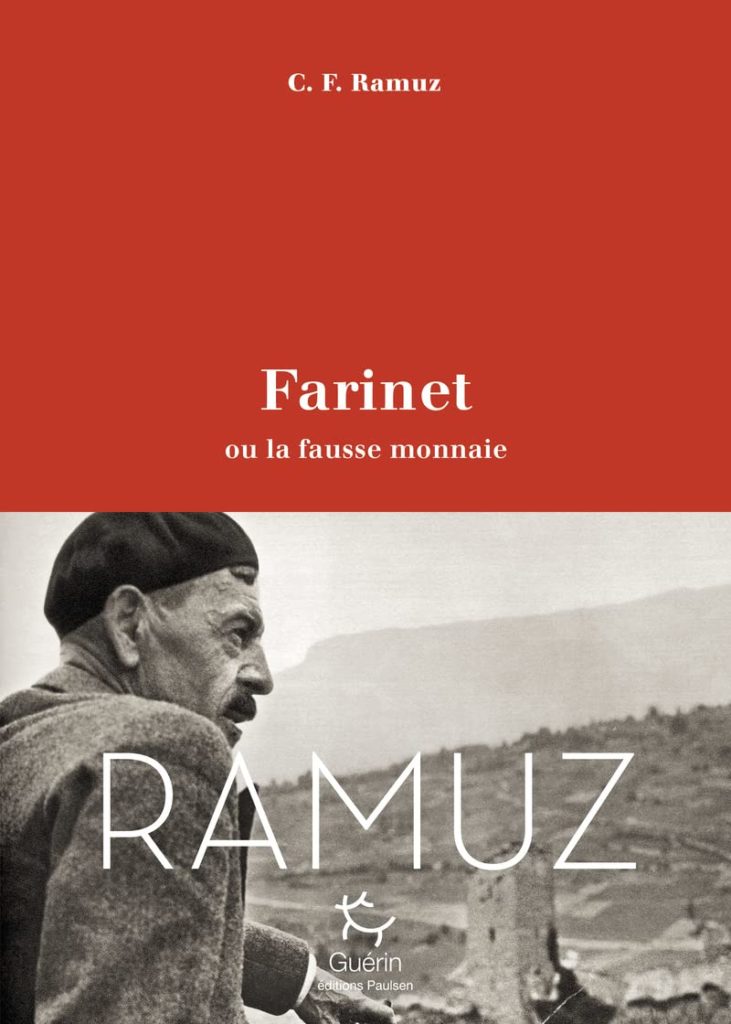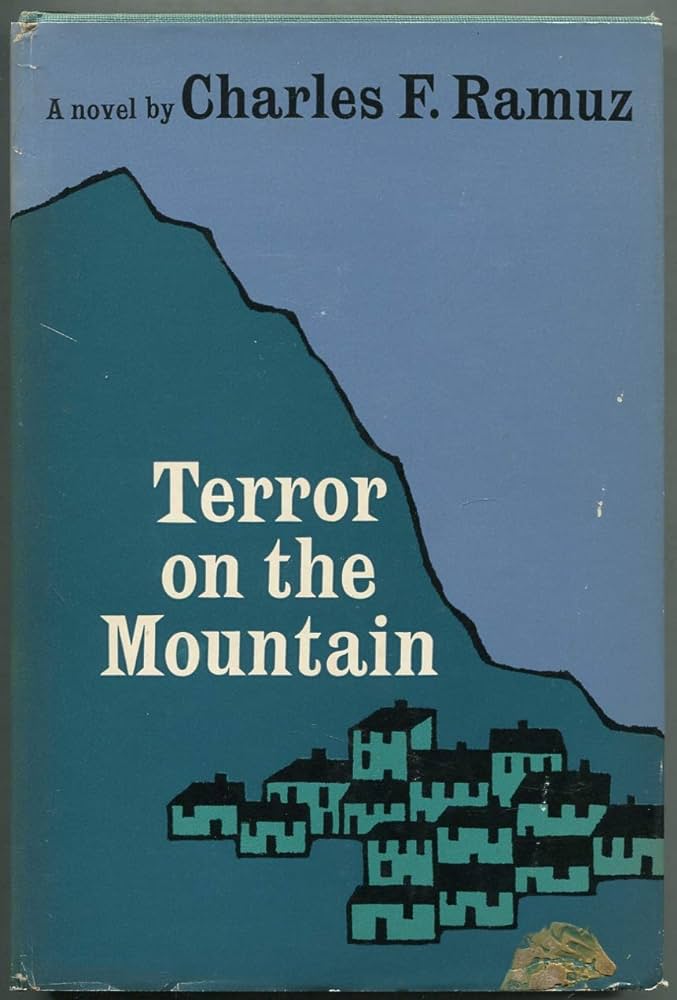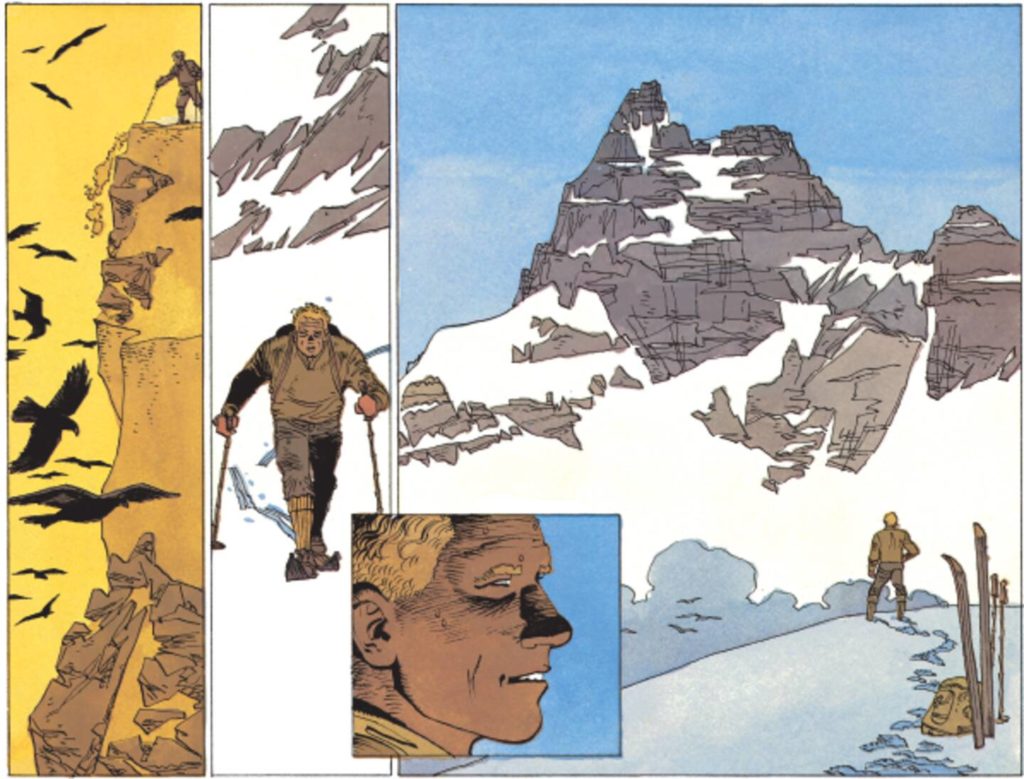Dare I confess to you one of my adolescent dreams? Her name is Evolena and, in Cosey’s comic strip “Lost in the Alps (A la recherche de Peter Pan)”, she’s the young mountain girl whom the hero, Sir Woodworth, catches bathing in a hot-water lake during a ski tour in the Valais Alps.
I’m a big fan of Cosey’s comics, his innovative layout and his pencil stroke, especially the Jonathan series, which is mostly set in the Himalayan mountains. But it’s the diptych “Lost in the Alps”, a rare return to his native Switzerland by the author who is fond of exotic destinations, that I like best. Perhaps it’s because of Evolena, whom I’ve just learned was inspired by the actress Maria Schneider, Marlon Brando’s partner in “The Last Tango in Paris”. While the actress probably gave her shape to the Valaisan beauty, her name comes from the superb village of Evolène, one of the most beautiful in Switzerland, located almost at the end of the Val d’Hérens.
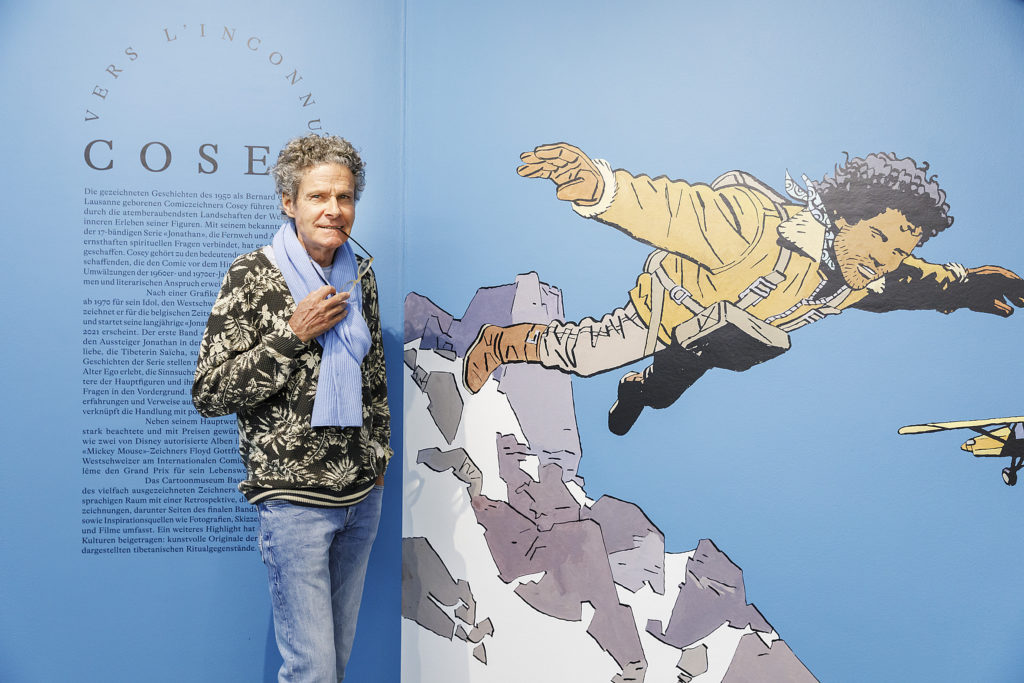
I visited Evolène this summer. The village has kept its wooden chalets and granaries lined up along the main road or in the lanes leading from the church. Here and there are also a few stone houses, undoubtedly richer, whose walls are decorated with pretty paintings.
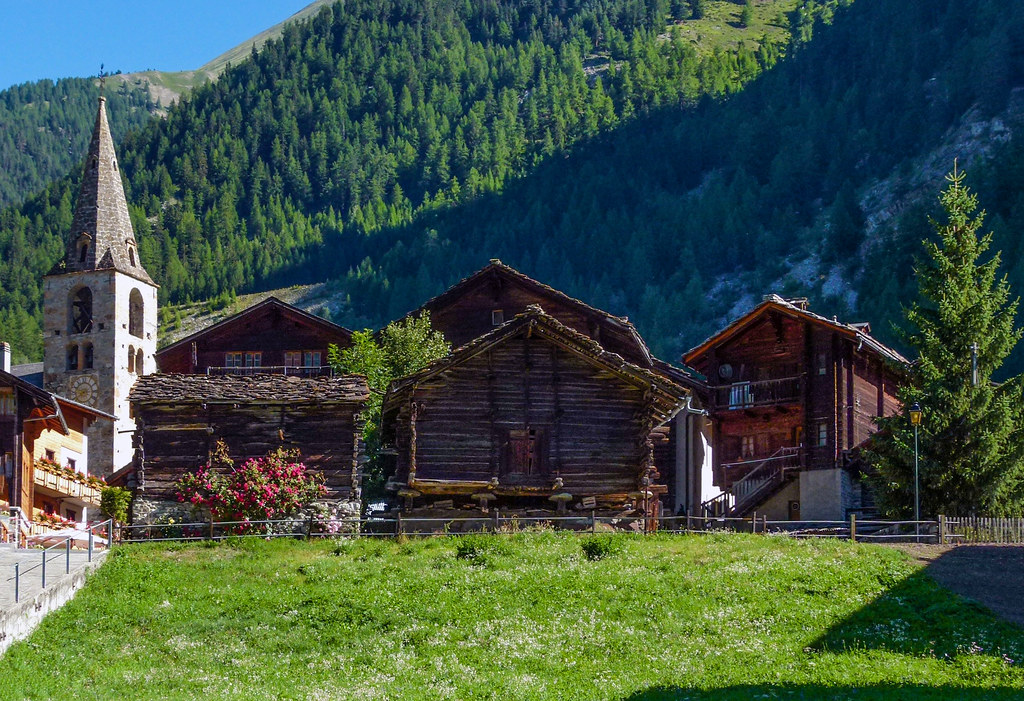
I also took advantage of these few summer days to discover the mountains of the region, walking along the bisses – the small canals dug into the side of the valley to carry water – in the Mayens de Sion, taking the gondola up to the summit of Montfort to admire the peaks and glaciers, or taking a walk on the Grande-Dixence, the highest gravity dam in the world. I’m looking forward to returning there in a few weeks to experience the joys of winter sports.
Cosey’s comic strip is a wonderful invitation to travel to Val d’Hérens. While the story, as its title in French suggests, is of course inspired by J.M. Barrie’s Peter Pan, the artist also admits to having borrowed and mixed a few bits and pieces from two novels by Swiss writer Charles Ferdinand Ramuz: “La Grande Peur dans la montagne (Terror on the Mountain)” and “Farinet ou la Fausse Monnaie (Farinet or the Forged Money)”. This last title is amusing when you consider that Ramuz’s face now adorns the 200 Swiss franc banknote. The first book is translated in English, but not the second.
The character of Farinet – who goes by the name Baptistin in Cosey’s comic strip – takes the name of a counterfeiter who existed in the Valais at the end of the 19th century. Ramuz’s hero escaped from Italian prisons in neighboring Val d’Aoste and returned to hide in his native Valais. He has found a vein of gold high up in the mountains, which he mines to make twenty-franc coins worth more than government’s money. His coins are readily accepted in the valley, and he is well received at the inn’s table. But the Sion gendarmes would have none of it. He is put in prison and escapes thanks to Joséphine, the inn’s waitress, who is in love with him. But what is he to do? Joséphine suggests he run away with her to Chamonix in France, taking the gold with him. Or will he surrender to the gendarmes, spend six months in prison and then marry Thérèse, the pretty daughter of the commune president who is pushing him in this direction?
This reflection on freedom is echoed in “Terror on the Mountain”. A village council, young against old, decides to send herds back to the Sasseneire mountain pasture, where they hadn’t been for twenty years due to an epidemic that had struck down the cows. Six men go up for the summer, including Joseph, who needs the pay to marry Victorine, who has stayed down in the village, but promises to visit her every week when supplies are brought in. Little by little, the disease returns to the mountain, events accelerate, and fear sets in. A quarantine is imposed, prohibiting travel between the village and the mountain pastures, but Joseph and Victorine want to ignore it.
Here again, it’s a question of freedom from government edicts. But more than that, can men violate the untamed mountain without fear? Vast questions to ponder while gazing from the terrace at the peaks of the Matterhorn, Dent Blanche or Weisshorn. Unless my mind wanders back to Evolena swimming in the lake’s blue waters.
